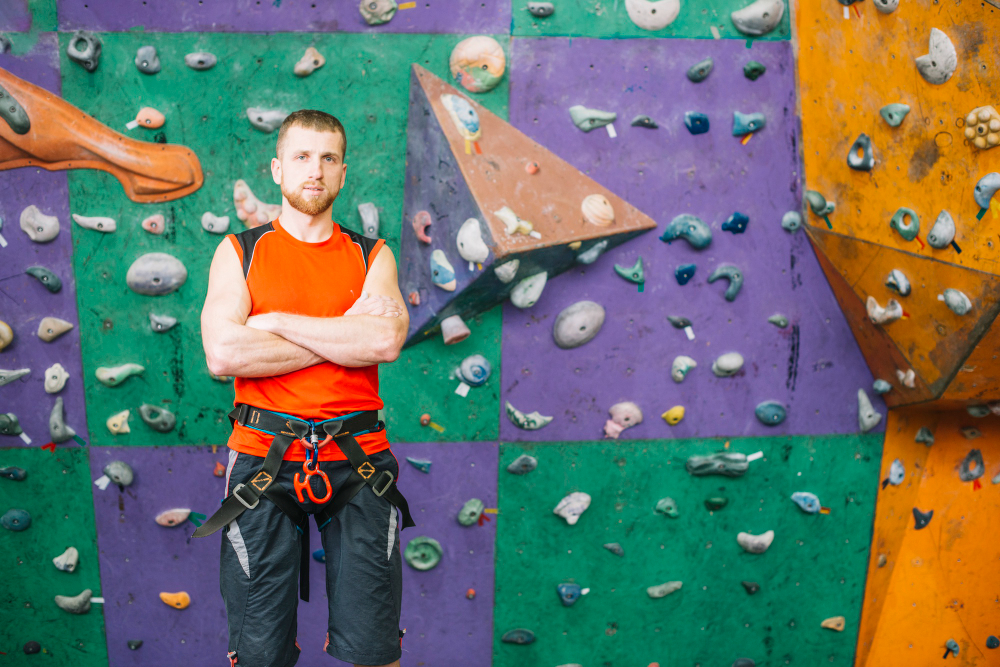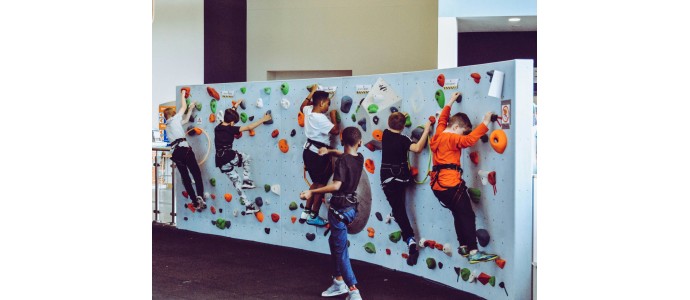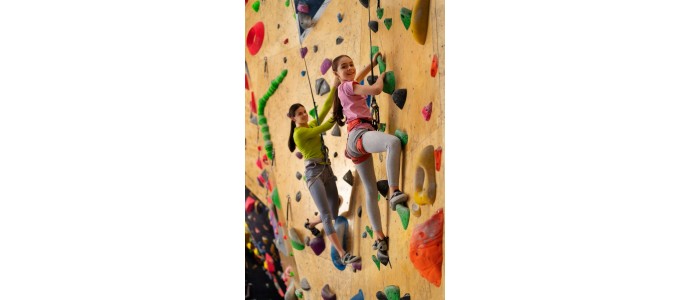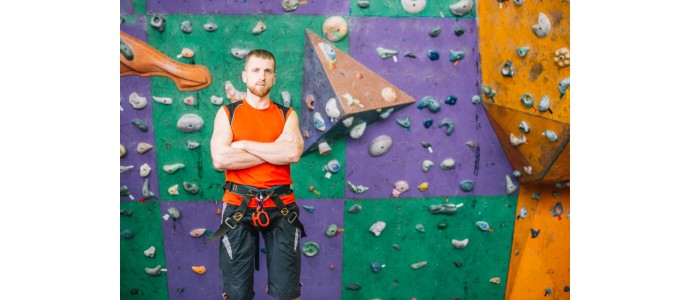Types of climbing
Climbing is a growing sport that attracts people of all ages and abilities. With a wide variety of modalities, climbing offers unique challenges and requires specific skills for each type. From the artificial walls of rock climbing to natural rock and ice formations, each climbing modality provides a distinctive and gratifying experience.
Classification of types of climbing
Climbing is a diverse sport with several modalities, each with its own challenges and requirements. The main categories of climbing are detailed below:
Free climbing
Description: Free climbing is a modality where the climber ascends using only his strength and skills, without artificial aids to progress. Safety equipment is only used to protect in case of a fall, not to assist in the climb.
Variants:
Sport climbing
Description: Uses fixed anchors (bolts) in the rock to secure the climber, allowing him to focus on the technique and difficulty of the route.
Equipment required: ropes, harness, express tapes and a securing device.
Features: It is ideal for those looking to improve their technique on default and safe routes.
Traditional climbing
Description: Climbers place their own removable safeties (friends, nuts, hexes) as they climb. This modality requires a deep knowledge of the equipment and rock.
Equipment required: Removable securing devices, ropes, harness and helmets.
Features: Offers a more adventurous experience and requires advanced technical skills.
Rock climbing
Description: It is carried out on natural rock walls and can be divided into several subcategories, each with specific characteristics.
Subcategories:
Boulder (Rock climbing):
Description: Climbing large low-rise rocks without the use of ropes, using mats to cushion falls.
Equipment required: shoes, magnesium and mats (crash pads).
Features: Requires strength and explosiveness. The routes are short but intense.
Big Wall or large walls:
Description: Multi-day climbs on large vertical walls, where climbers spend the night in hammocks hanging from the rock.
Equipment needed: Traditional climbing equipment, hammocks (portaledges), food and water.
Characteristics: Requires physical and mental endurance, as well as skills to handle bivouac equipment.
Psicobloc:
Description: Similar to the boulder, but made over water, so that falls are dampened by the sea.
Equipment required: shoes and magnesium.
Features: Combines the thrill of bouldering with the safety of water. It is popular in coastal locations.

Ice and mixed climbing
Ice climbing:
Description: Involves the ascent of ice formations such as frozen waterfalls or glaciers, using specialized equipment such as ice axes and crampons.
Equipment needed: Ice-picks, crampons, ropes, harness, helmet and warm clothing.
Features: Requires specific skills to operate the equipment and move on icy surfaces.
Mixed climbing:
Description: Combines rock and ice climbing, requiring skills in both modalities and specific equipment for each type of surface.
Equipment required: Combination of rock and ice climbing equipment.
Other modalities
Climbing in climbing walls:
Description: It is carried out in specially designed indoor or outdoor facilities with artificial dams. Ideal for training and climbing climbers of all levels.
Equipment required: shoes, harness, rope and securing device.
Features: Controlled environment, varied and safe routes, ideal for practicing and improving techniques.
Alpine climbing:
Description: Combines rock climbing, ice and mountaineering. The main objective is to reach peaks and usually requires a wide variety of skills and specialized equipment.
Equipment required: Combination of rock and ice climbing equipment, plus mountaineering equipment.
Characteristics: Multifaceted challenges, variable weather conditions and requires excellent physical and technical preparation.
Artificial climbing:
Description: Use equipment such as hooks, fixings and stirrups to climb, rather than relying solely on the strength of the climber.
Equipment required: Hooks, stirrups, pitons and securing equipment.
Features: Allows to climb extremely difficult routes, using equipment to progress.
Essential equipment and techniques
Having the right equipment and mastering essential techniques is critical to safety and success in climbing. The following describes the key elements and skills that every climber should know and use.
Basic equipment
Harness, helmet and ropes
Harness: It is the element that connects the climber with the rope, distributing the weight evenly in case of fall. There are specific harnesses for different climbing modalities, such as sport, traditional and alpine.
Helmet: Protects the climber’s head from possible falls of rocks or impacts against the wall. Essential in all modalities, especially outdoor and ice climbing.
Ropes: Dynamic ropes are the most used in climbing because they absorb the energy of falls, reducing the impact on the climber. There are single, double and twin ropes, each with specific uses.
Climbing shoes:
Description: Special footwear designed to improve grip and precision in the prey. They are made of adherent materials and have a snug shape to maximize contact with the climbing surface.
Types: There are different types of cat feet, from the most rigid for technical routes to the softest ones for bouldering. The choice of type depends on the climbing style and comfort of the climber.
Magnesium and magnesium
Magnesium: It is a bag that is worn tied to the waist to store magnesium, facilitating its access during climbing.
Magnesium: Powder used to dry the sweat from the hands, improving grip on prey. Essential for keeping hands dry and preventing slipping.
Insurance techniques
Basic Knots Knowing and mastering the knots is crucial for safety in climbing. Two of the most important knots are:
Eight knot: It is the most commonly used knot to tie the rope to the climber’s harness. It is safe, easy to inspect and easily unties after bearing a load. How to do it: Form an eight with the rope, pass the free end through the harness loop and follow the original eight knot until it is fully closed and tightened.
Dynamic knot (HMS): Used for securing and abseiling, this knot allows you to control the friction on the rope with your hands. How to do it: Form a large loop, pass the free end through the securing carabiner and then through the loop, creating friction that can be easily controlled.
Use of securing devices Securing devices are essential tools to protect the climber in case of a fall. Learning to handle them properly is vital for the safety of both climber and insurer.
Grigri: Assisted securing device that automatically locks the rope in case of a fall, providing an additional level of safety. Use: Insert the rope as indicated by the device, make sure to always keep a hand on the braking end of the rope and control the descent smoothly.
ATC (Air Traffic Controller): Tubular securing device, versatile and lightweight, that allows to secure a climber and to perform rappelling. Use: Pass the rope through the securing device and carabiner, keeping a firm hand on the braking end to control friction and stop the rope in case of fall.




.jpg)





Comments
No comment at this time!
Leave your comment